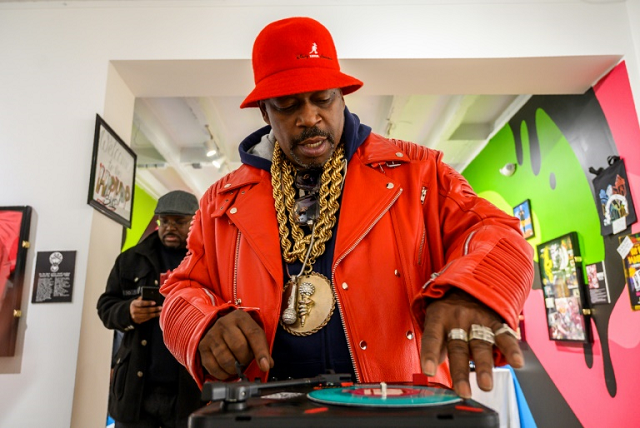
The result was the group's 1979 smash "Rapper's Delight" - which is credited as the commercial start of an unforgettable era in music.
Once an underground style centered on live performance in New York's Bronx borough, rap and hip-hop are the most influential styles in contemporary music today.
To mark hip-hop's big anniversary, a pop-up museum has been established in the US capital through mid-February.
"I never thought it would reach those proportions," said Grandmaster Caz, an icon of early hip hop who wrote parts of "Rapper's Delight."
"Back in the day, we were discouraged from doing hip-hop - nobody respected it."
But the track found runaway success, becoming a global sensation and selling millions of copies.
In 2011, "Rapper's Delight" was even added to the prestigious National registry at the Library of Congress - a nod to its role in ushering in a brand new genre.
Drake under fire for kissing, groping minor
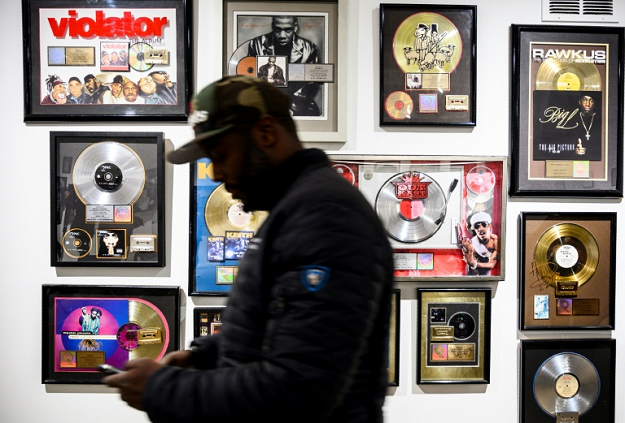 The pop-up museum features multiple prizes won by hip-hop artists over the years. PHOTO: AFP
The pop-up museum features multiple prizes won by hip-hop artists over the years. PHOTO: AFP"Putting it on record was the smartest thing that could happen to hip-hop," one of the three Sugarhill rappers, Master Gee, told AFP at the opening night of the museum, which boasts more than 500 pieces of autographed memorabilia.
"Commercially we are the first of our kind," Master Gee said. "We landed on the moon, if you will."
At the beginning, making music wasn't necessarily Master Gee's end goal.
"I just wanted to get a date," he said.
The rap pioneer, now 57, was then in his last year of high school, and performed at neighborhood parties.
"All the lyrics I wrote were in the effort for people to know which one I was out of the three" in the band, he said.
In those days, hip-hop was a fledgling cultural movement that revolved around four elements: dance, graffiti, vocals - known as "MCing" - and controlling the turntables, or "DJing."
The MCs - short for "masters of ceremony" - were primarily on stage to support the DJs.
But they ultimately became the true stars of the genre.
Hip-hop took some musical cues from disco and funk: "Rapper's Delight" features the famous bassline of "Good Times" by the band Chic - which was later sampled in 1980 by Queen in "Another One Bites the Dust."
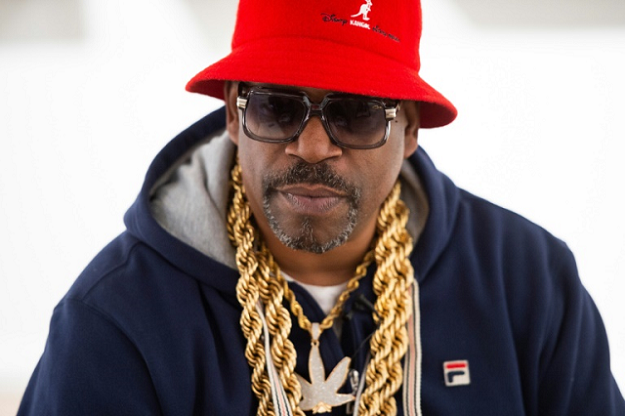 Curtis Fisher, aka Grandmaster Caz, still proudly wears his piles of blingy chains. PHOTO: AFP
Curtis Fisher, aka Grandmaster Caz, still proudly wears his piles of blingy chains. PHOTO: AFPEarly rap and hip-hop were focused on the principles of "peace, love, unity and having fun" - a cocktail that blended a festive atmosphere with a medium used by black people to express themselves.
"It's a release; it's self-expression," said Grandmaster Caz, who at 57 still proudly wears his blingy chains.
"It was a fun and new way to express yourself."
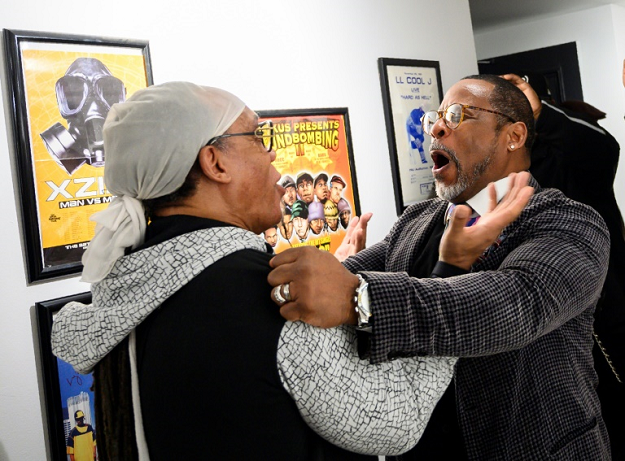 Melvin Glover, aka Melle Mel (L), greets Guy O'Brien, aka Master Gee, from the Sugarhill gang before a joint concert at the hip-hop pop-up museum at the Hip-Hop Museum. PHOTO: AFP
Melvin Glover, aka Melle Mel (L), greets Guy O'Brien, aka Master Gee, from the Sugarhill gang before a joint concert at the hip-hop pop-up museum at the Hip-Hop Museum. PHOTO: AFPAt the opening of the museum in Washington, Grandmaster Caz and the Sugarhill Gang performed an old school concert with another hip-hop trailblazer, Melle Mel.
Part of the pioneering group Grandmaster Flash and the Furious Five, Melle Mel co-wrote another cornerstone of the genre: "The Message."
Released in 1982, it was the first recorded rap song to describe life in the ghettos, addressing socioeconomic issues like poverty.
Taking on social ills became signature to rap - a musical revolution that, like hip-hop's rise to commercial fame, happened at first by accident.
Beyonce, Jay-Z offer lifetime concert tickets for fans who go vegan
Melle Mel said he was just trying to "do something different, to write outside the box from the basics of hip-hop rhymes - when you rap about how good you can rap, or about a girl."
"I was just trying to change my style and write a different concept."
Today he considers the song "the most important hip-hop record ever made" - but at the time of its release, it was hardly a hit.
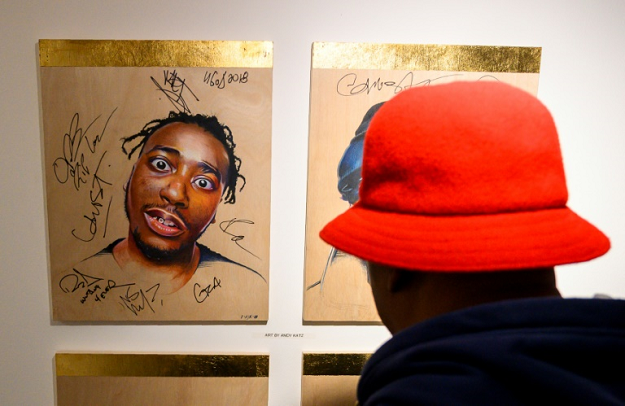 Grandmaster Caz looks at a portrait of late rapper Ol' Dirty Bastard of the Wu-Tang Clan at the hip-hop pop-up museum. PHOTO: AFP
Grandmaster Caz looks at a portrait of late rapper Ol' Dirty Bastard of the Wu-Tang Clan at the hip-hop pop-up museum. PHOTO: AFP"Nobody really believed in the record," Melle Mel said. "I didn't think it was going to be popular or a commercial success, because it was serious."
But the record proved a sensation, and in 2007, the group became the first rap artists inducted into the Rock and Roll Hall of Fame, the pantheon of popular American music.
"It put our group and hip-hop music on the level I thought it should be on: with all the other great genres," Melle Mel said.
And though today's hip-hop is markedly different than what came out in those nascent days, its "parents" are optimistic about its future.
"You can't stop what can't be stopped and you can't kill what can't be killed," Master Gee said with a grin.
"And that's hip-hop."
1736930668-0/Untitled-design-(97)1736930668-0-405x300.webp)

1736929668-0/Untitled-design-(96)1736929668-0-165x106.webp)

1736929186-0/BeFunky-collage-(50)1736929186-0-165x106.webp)

1736924527-0/sidra--(3)1736924527-0-270x192.webp)

1736922471-0/sidra--(2)1736922471-0-270x192.webp)


1732012115-0/Untitled-design-(14)1732012115-0-270x192.webp)
1736844405-0/Express-Tribune-(2)1736844405-0-270x192.webp)










COMMENTS
Comments are moderated and generally will be posted if they are on-topic and not abusive.
For more information, please see our Comments FAQ